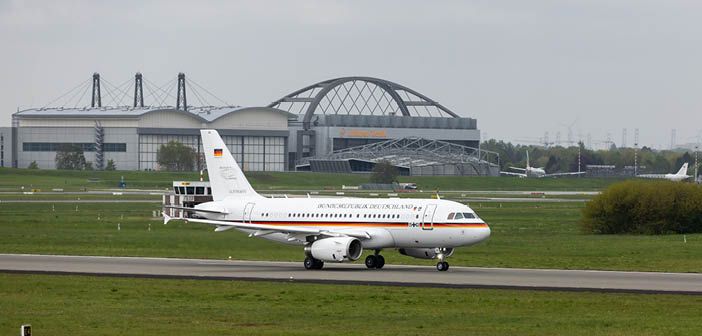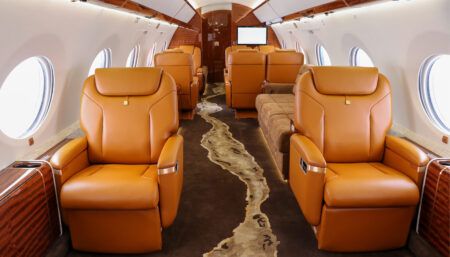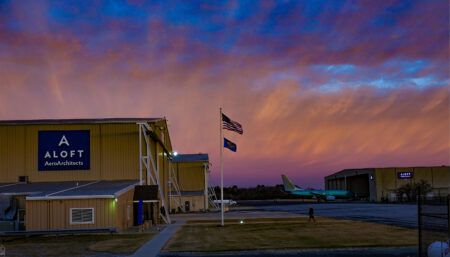Lufthansa Technik has delivered an ACJ319 converted to perform observation missions for the German armed forces (Bundeswehr) under the Treaty on Open Skies. The aircraft will be used for “confidence-building measures” but is also ready for medical and passenger transport flights.
The conversion of the former business jet, which was completed on schedule and within budget, was overseen by the Federal Office of Bundeswehr Equipment, Information Technology and In-Service Support (BAAINBw). As the general contractor and system integrator, Lufthansa Technik played the leading role in the construction and the development of suitable solutions in cooperation with more than a dozen industrial partners, based on the requirements of the Bundeswehr.
“The Treaty on Open Skies is an indispensable pillar of arms control in the OSCE area,” said Niels Annen, Minister of State at the Federal Foreign Office. “We are committed to ensuring that it continues to work despite some difficulties and is fully implemented by all parties. This way, the contract can create transparency and trust. The treaty also shows that cooperation between Russia and the USA is still possible even when it comes to sensitive security issues. We want to strengthen the Treaty on Open Skies. That is why I am delighted that Germany is once again providing its own modern aircraft for overflights.”
“I would like to thank our customer, the German armed forces, as well as our many industrial partners for their excellent cooperation on this formidable integration task and wish the German armed forces every success with this very special aircraft,” said Dr Johannes Bussmann, chairman of the executive board of Lufthansa Technik. “Special thanks also go to our colleagues, who have done an outstanding job mastering this far-from-ordinary task.”
![]() During a 26-month layover at the Lufthansa base in Hamburg, Germany, the ACJ319 was first given a complete overhaul and then received more than 150 modifications, ranging from the implementation of minor airworthiness directives to fundamental alterations of the aircraft’s structure. The structural work included replacing a 7m-long part of the outer skin on the upper side of the fuselage as well as cutting openings out of the lower part of the fuselage and fitting them with glass to enable the use of observation and camera technology on Open Skies flights.
During a 26-month layover at the Lufthansa base in Hamburg, Germany, the ACJ319 was first given a complete overhaul and then received more than 150 modifications, ranging from the implementation of minor airworthiness directives to fundamental alterations of the aircraft’s structure. The structural work included replacing a 7m-long part of the outer skin on the upper side of the fuselage as well as cutting openings out of the lower part of the fuselage and fitting them with glass to enable the use of observation and camera technology on Open Skies flights.
Besides the installation of a digital infrared sensor and digital optical camera systems for three different flight altitudes, the layover also comprised major modifications to the cabin. It was equipped with four operating stations for the observation team, among other things. In the mission area, the aircraft has a further 16 seats for staff of the overflown state party as well as the staff of partner nations. To ensure that all systems can be accessed and inspected at any time and without great effort, the engineers have provided maintenance flaps and access doors throughout the cabin and its installations.
Three STCs were required for the approval: one each for the modification of the structure, the camera windows in the fuselage and the modification of the cabin and cockpit. The aircraft will be approved by both civil and military aviation authorities. Before it can be used for observation flights over other state parties, it must be accredited by all member states. Other countries will then also be able to rent the aircraft for their mission flights.
The Treaty on Open Skies was signed in 1992 by members of NATO and the former Warsaw Pact, as a symbol of trust. It allows them to fly over each other’s territories and capture photo, radar and infrared images in the process. Since 1997, the Federal Republic of Germany has been using aircraft belonging to partner nations for this purpose. Now the country once again has its own mission aircraft.





